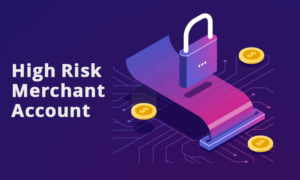Step-by-Step Guide to ISO 27001 Certification for Small Businesses
In a landscape riddled with cyber risks, small businesses must act proactively to safeguard their digital and physical assets. ISO 27001 certification isn’t just for large enterprises. In fact, small businesses can gain a competitive edge, improve data governance, and build stakeholder confidence by adopting this globally recognized standard.
Understanding ISO 27001: Beyond Just Compliance
ISO 27001: 2022 is the most current revision of the ISO/IEC 27001 standard, focusing on Information Security Management Systems (ISMS). It outlines a risk-based approach to securing data and managing information assets. Certification is awarded only after successful evaluation by an accredited body, proving that an organization:
- Understands its security risks
- Has implemented necessary controls
- Is committed to ongoing monitoring and improvement
For small businesses, this can mean a structured, scalable framework that grows with the company.
ISO 27001 Certification Benefits for Small Enterprises
Implementing ISO 27001 is not just a checkbox activity. It yields measurable business advantages:
- 🔐 Improved cybersecurity posture
Protects against ransomware, phishing, and data breaches. - 🤝 Increased client and partner confidence
Many larger clients require ISO certification before doing business. - 📜 Regulatory compliance
Helps align with GDPR, HIPAA, and other data protection laws. - 💼 Streamlined business processes
Brings clarity and consistency to how data is managed across the business. - 📈 Market differentiation
Certification can be a unique selling point in highly competitive industries.
Step-by-Step Implementation Roadmap
Here’s a deeper look at each implementation phase, tailored to the unique needs and constraints of small businesses.
Step 1: Get Executive Buy-In and Define Roles
For small businesses, leadership may include a small management team or even the owner. It’s essential that these stakeholders are directly involved.
Tip: Assign an “ISMS Champion” who understands both your technical landscape and business goals — this could be your IT manager or operations lead.
Step 2: Define Scope with Business Value in Mind
The scope should reflect what you want to protect. Instead of covering the entire business, start with core functions that handle sensitive information.
Example: A digital marketing agency may define its scope as “client data storage, project management platforms, and email communication systems.”
Pro Tip: Keep the scope manageable to reduce costs and complexity.
Step 3: Gap Analysis – Know Where You Stand
A solid gap analysis will provide a baseline for your ISMS development. It’s often wise to bring in an ISO 27001 consultant for a one-time assessment.
Deliverables from a gap analysis might include:
- Existing vs. required policies comparison
- Technology audit of infrastructure
- Awareness of staff regarding security
Step 4: Conduct Detailed Risk Assessment
You must define a methodology for identifying and assessing risks.
Key inputs:
- What could go wrong?
- What are the consequences?
- What is the likelihood?
Example: The risk of unauthorized access to client data could be mitigated with multi-factor authentication and role-based access controls.
Tool Tip: Use a simple spreadsheet or risk management software like RiskWatch or ISMS.online.
Step 5: Create and Tailor ISO 27001 Documentation
Your ISMS must be well-documented and fit your organization’s size and needs.
Essential documents for small businesses:
- Security Policy (high-level direction)
- Acceptable Use Policy
- Data Classification Policy
- Access Control Policy
- Incident Response Plan
- Business Continuity Plan
Make sure each policy includes roles, responsibilities, and review dates.
Step 6: Implement Controls and Train Staff
This is the most hands-on stage. You apply real safeguards based on your earlier risk assessment.
Practical examples:
- Install firewalls and endpoint protection
- Limit USB device use
- Encrypt laptops and backups
- Train all staff quarterly on security awareness
Tip: Consider using platforms like KnowBe4 or CyberHoot for training and phishing simulations.
Step 7: Internal Audit – Simulate the Real Thing
The internal audit isn’t a formality — it’s your dress rehearsal.
Checklist:
- Review control effectiveness
- Validate documentation exists and is up to date
- Confirm logs are being maintained (e.g., user access, incident records)
Tip: Use a different team member (not involved in the ISMS) or outsource the audit to ensure objectivity.
Step 8: Management Review – Data-Driven Decisions
Once the internal audit is complete, gather management to discuss:
- Audit results
- Open risks
- KPIs (like number of incidents, user compliance levels)
- Feedback from clients or auditors
Goal: Decide what needs to be improved or adjusted to strengthen the ISMS.
Step 9: Engage with a Certification Body
Choosing the right body is critical. Look for UKAS-accredited or internationally recognized certifiers such as:
- BSI Group
- TÜV Rheinland
- SGS
- DNV
Certification Process:
- Stage 1 Audit – Review documentation
- Stage 2 Audit – On-site verification and staff interviews
- Surveillance audits – Annual check-ins for 3 years
Step 10: Commit to Continuous Improvement
Even after certification, the journey doesn’t end. ISO 27001 requires ongoing vigilance.
Maintain your ISMS through:
- Regular policy updates
- Continuous staff training
- Ongoing risk assessments
- Incident tracking and lessons learned
Real-World Examples of ISO 27001 Success in Small Businesses
- A 10-person FinTech startup used ISO 27001 to secure a partnership with a multinational bank.
- A remote-first SaaS company leveraged the framework to manage cloud risks and comply with multiple privacy laws.
- A consulting firm landed a government contract by demonstrating ISO certification during procurement.
These examples prove that size doesn’t limit success — smart planning and disciplined execution do.
Estimated Timeline and Cost Breakdown
| Phase | Time Required | Approximate Cost |
|---|---|---|
| Planning & Scope | 1–2 weeks | Internal resources |
| Gap Analysis | 2–3 weeks | $1,000–$3,000 |
| Risk Assessment & Docs | 2–4 weeks | Internal or $2,000–$5,000 |
| Implementation | 4–8 weeks | Depends on control needs |
| Internal Audit | 1 week | $500–$1,500 |
| Certification Audit | 2–3 days | $3,000–$6,000 |
Total time: ~3–6 months
Total investment: ~$5,000–$15,000
Final Thoughts: ISO 27001 is a Long-Term Investment
For small businesses, ISO 27001 may seem overwhelming at first. But with a phased approach, right-sized documentation, and focus on business value, it becomes a powerful enabler of growth and credibility.
Whether you’re looking to improve internal processes, reassure clients, or unlock new markets, ISO 27001 is your gateway to sustainable success in a secure digital economy.
Also read about:
“Key Qualities That Define the Best SSC CGL Coaching













